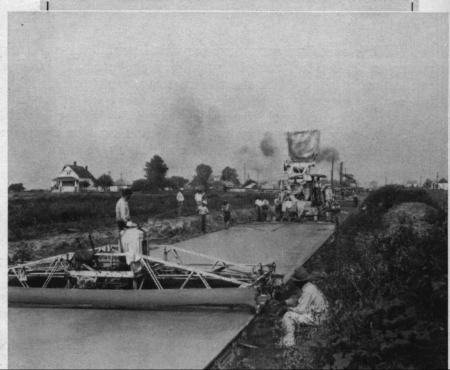|

At the turn of the century, Shelby Township was mostly rural
farmland, with two major hubs of activity within its borders.
" Back then there was nothing much in the Township,"
said Kenneth Frank of the Shelby Township Historical Committee, " There was Utica and there was Disco."
In the little
hamlet of Disco, most transportation was by horse and buggy, and travelers could stay at a hotel at the corner of what is
today 24 Mile and Van Dyke.
The Switzer Store on the N.W. corner was the grocery store for the community and continued
to be the focal point for the community for many years. Contributing to the thriving little town was the nearby stop for the
Detroit Interurban Railway, a direct link to Detroit. The rural farming community surrounding the two little villages was
well known for growing wheat. " Back then in those days, if you had dogs, they taxed you on the number of male dogs you had,"
Frank said. " They collected the money in a fund and used it to pay bills (in the township)." According to Frank, research
of the township records reveals that a major issue of the time was wild dogs killing sheep. " There really wasn't much going
on," he said.
On July 9,1915 lightning struck the Disco church. Flames were surrounding the metal tank holding gasoline
for the church's lighting system. Only a concerted bucket brigade saved the building. Lightning struck again in 1917, burning
Andrew Robertoy's store and barn to the ground on June 29. Also lost in the fire were the possessions of the Gleaners, who
had their lodge upstairs in the store.
Late in 1917, the Edison company began setting electrical poles from Disco
south to Utica.
Once the U.S. entered World War I, the Methodist Protestant Church and Utica Sentinel began following
the progress of local soldier Ed Harrington as he enlisted, passed basic training and went off to fight in France and then
came home. In 1922 Van Dyke was paved, making automobile travel considerably easier in the area. In 1925 the Switzer store
was robbed of $500 by unknown thieves, quite a haul in those days. In 1926 Packard Motor Car Co. began purchasing farmland
between what is now 22 and 23 Mile Roads, and between Van Dyke and Mound Road for construction of the Packard Proving Grounds.
Frank Wozniak of
Disco, the so called Moonshine king, was arrested in August 29, striking a blow to those in the area who enjoyed liquor during
the height of Prohibition.
(The Source Newspaper-October 31,1999,by Jon Ottman)
|

